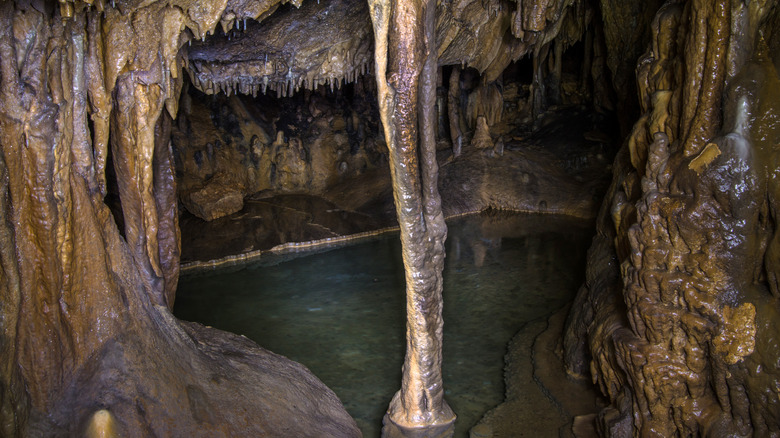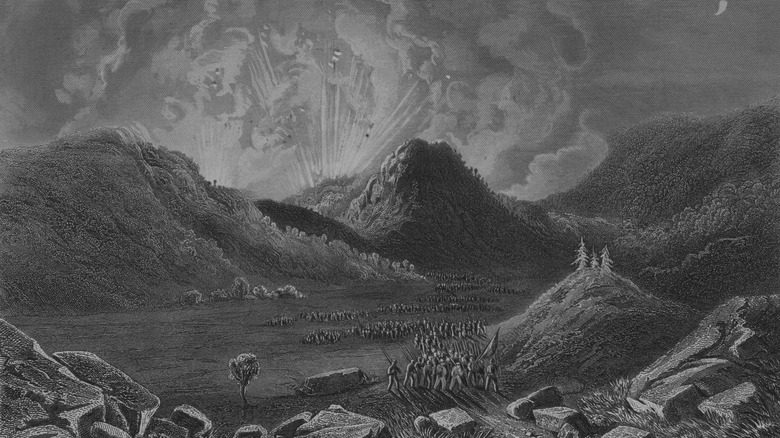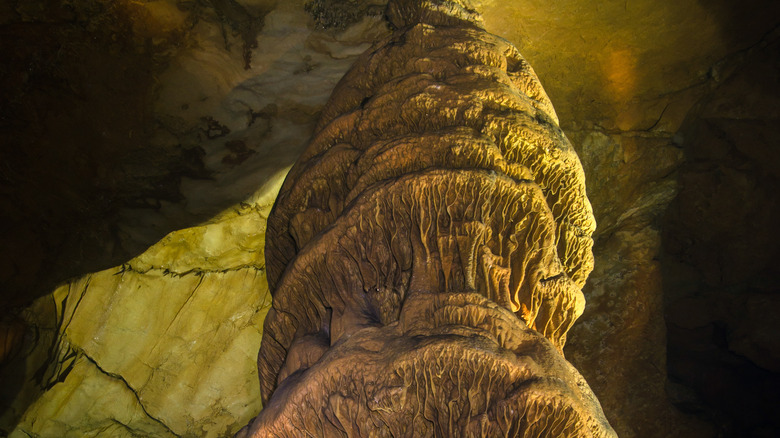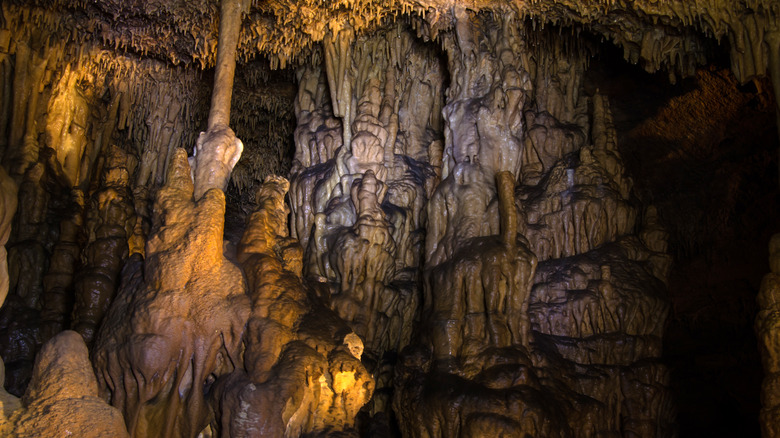Cumberland Gap National Historical Park stretches across around 24,000 acres of Kentucky, Tennessee, and Virginia. Visitors to the park can learn about American history, hike miles of trails, or go off the path and explore the vast wilderness. As striking as the park’s views of the Appalachian Mountains, waterfalls, and forests are, the most fascinating activity in the park might not be a mountain peak. In fact, it isn’t even above ground.
Gap Cave is an ancient and beautiful cavern that formed millions of years ago in what would one day become southern Kentucky. While it isn’t anywhere close to the longest cave system in the world, there is more to Gap Cave than it might seem. As described by the National Park Service, five different levels of Gap Cave have been discovered, which is about 18 miles of cavern, going deeper and deeper into the earth. While these farther levels aren’t open to the public, visitors accompanied by park rangers are able to explore the first half mile, which includes the oldest three levels of Gap Cave.
The inside of Gap Cave

The entrance to Gap Cave looks like nothing more than a narrow opening in the rock face with a path going into it and a stone column holding it up. As seen in a video recorded by Livin R Dash, who visited the cave in 2022, the walls and floor of the cave are rough and uneven, and taller visitors may have to stoop when going inside to avoid knocking their heads on the slanted limestone ceiling. While going deeper into the cave, there are ramps, stairs, and handrails, which make the descent safer and easier.
Being underground, the inside of Gap Cave is extremely dark, and those hoping to explore the inside always require flashlights. With a little light, there is a lot to see inside the caverns. There are incredible rock formations, created by mineral-rich water dripping into the cave, as well as the cave’s inhabitants: insects, amphibians, and bats. As described by the National Park Service, there are at least five different types of bats that live inside the cave, including Big Brown Bats and Little Brown Bats, which are regularly seen by visitors to the cave’s upper levels.
Gap Cave during the Civil War

While seeing the inside of Gap Cave is interesting enough to warrant a visit in its own right, many of the visitors to Cumberland Gap National Historical Park come to learn about its ties to American History. Like many national parks, it is a favorite of Civil War history buffs. Not only was the cave probably used to create saltpeter, a component of black gunpowder, it offers a glimpse into what life was like for soldiers who fought in the Civil War.
Cumberland Pass was an important area strategically that both the Union and the Confederacy sought to control during the war, and it changed hands several times. Both Union and Confederate soldiers explored Gap Cave while their forces were posted there, and many left their marks in it. One of the caverns that is open to visitors is known by the park rangers as the Civil War Room, because soldiers wrote their names on the walls.
Touring Gap Cave

Joshua Moore/Getty Images
People have been fascinated by Gap Cave for a long time, and it has been possible to take tours there since around the year 1900. As described by the National Park Service, in the past, these early tours allowed as many as 100 people to enter the caves at once, and may even have allowed visitors to break off stalactites and stalagmites as souvenirs for a small fee. Today, however, tours are led by members of the Cave Research Foundation, and are far safer for both visitors and the cave.
The tour, which lasts about two hours, requires participants to walk up more than 180 stairs, navigate uneven terrain, and potentially duck down in some places to avoid knocking their heads, but for those willing to make the journey, it offers a fascinating look into history. Tours are offered between April 21 and September 4, and are limited to groups of 20 people. Folks wishing to see the inside of Gap Cave for themselves can make a reservation at the park’s visitor center for just $8 per person.

